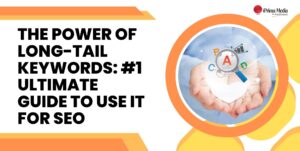Generative AI has fundamentally altered how we approach search engine optimization (SEO). By harnessing the power of advanced algorithms, we can now create and optimize content in ways that were previously unimaginable.
This technology enables us to enhance the user experience and ensure that content not only adheres to SEO best practices but also resonates more effectively with the intended audience. It has opened up a new realm for us to explore innovative content strategies that align with Google's ever-evolving algorithms.

As search engines like Google get smarter, our tools also need to evolve. The integration of generative AI in our SEO toolkit allows us to craft personalized and engaging content that stands out in a crowded digital space.
With these tools, we can analyze vast amounts of data and glean insights that guide our content creation process, ensuring that the created content is not just high-quality but also SEO-friendly.
Our focus remains on striking the perfect balance between innovativeness and search engine guidelines, always keeping the user experience at the forefront. Generative AI is not just about meeting SEO metrics; it's about creating a seamless interaction between content and user, enriching their experience, and providing value that search engines recognize and reward. Through this synergy, we're empowered to consistently achieve better rankings and drive organic traffic to our sites.
Understanding SEO and Its Importance
SEO, or search engine optimization, remains a cornerstone in connecting audiences with online content. Our priority is to enhance visibility and drive organic traffic effectively through proven strategies.
Fundamentals of SEO
SEO strategies constitute the core practice of tailoring website content to increase its visibility and ranking on SERPs (Search Engine Results Pages).
The goal is to attract more organic traffic, which refers to visitors who arrive at a website from natural search results rather than paid advertisements.
An effective SEO strategy hinges on multiple components: selecting the right keywords, creating high-quality content, and structuring a website so that it is easily indexed and favored by search engines.
SEO in the Digital Marketing Ecosystem
In the digital marketing ecosystem, SEO acts synergistically with other channels to create a holistic approach to online presence.
The optimization of content not only serves to improve rankings on SERPs but also bolsters user experience, making it pivotal for converting traffic into customers.
By analyzing user behavior and search patterns, we can refine our SEO tactics, ensuring that our brand remains visible and prominent in the ever-evolving digital landscape.
Exploring Generative AI in SEO
As we navigate the SEO landscape, generative AI emerges as a pivotal tool, offering transformative approaches to content generation and optimization, tailored to enhance search engine visibility and user engagement.
Role of Generative AI Tools
Generative AI tools are redefining how we conceive and implement SEO strategies. By leveraging these tools, we can generate SEO-friendly content that is both relevant and appealing to our target audience.
This technology aids in creating personalized content, which is a key factor in engaging visitors and improving search engine rankings.
The algorithms can process large data sets to suggest optimizations, making it easier for us to fine-tune our web presence.
Impacts on Content Creation
When it comes to content creation, generative AI is a driving force behind the production of high-quality, SEO-optimized articles and blog posts.
These AI-powered systems not only produce content at scale but also ensure that the material is designed to meet specific SEO requirements.
This enables us to focus on delivering content that not only captivates but also retains user interest, resulting in a more dynamic and effective SEO strategy.
Keyword Optimization Strategies
In the landscape of SEO, effectively utilizing keywords is critical for enhancing a website's visibility and ranking. We look at data-driven approaches to not only find the right keywords but also integrate them skillfully into content.
Keyword Research Techniques
To begin with, keyword research is foundational to any SEO strategy.
Our approach involves analyzing search volume and relevance to pinpoint what our target audience is searching for.
We employ tools capable of uncovering not just popular keywords but also finding opportunities in long-tail phrases that might have less competition.
- Utilize keyword ranking tools to track your positioning on search engines and refine your keyword strategy.
- Assess search volume to determine the potential traffic gain for specific queries. High search volume indicates popularity, but also potential high competition.
It's vital to incorporate keywords that align with the user's intent behind the search query.
By focusing on user intent, we cater to the audience's needs more precisely, which search engines reward with higher rankings.
Incorporating Keywords into Content
Once we've established a robust list of keywords, the next step is content optimization.
This involves strategically placing our keywords throughout various elements of our web pages while maintaining natural readability.
- Integrate primary keywords in title tags, headers, meta descriptions, and within the first 200 words of your content.
- Use secondary keywords throughout the content body, but avoid keyword stuffing. The focus should always be on creating valuable and engaging content for your visitors.
Remember, the goal of integrating keywords is to make sure that the content serves its purpose for users first and search engines second. Balancing between SEO tasks and user engagement leads to content that ranks well and satisfies user queries.
Technical SEO and Website Optimization
In the modern landscape of SEO, maintaining a technically sound website is critical for ranking well on search engines like Google.
From the robustness of site architecture to the efficiency of mobile optimization, these factors play pivotal roles in user behavior and search engine rankings.
Site Architecture and Navigation
Our website's architecture should be structured in a way that enables users and search engine crawlers to navigate with ease.
This includes logical hierarchy and intuitive navigation, which contribute to strong information architecture.
By creating a sitemap, we provide a clear guide of our site's content, which is essential for Google's crawlers to index our pages efficiently.
- Hierarchy example:
- Home
- Category 1
- Subcategory A
- Subcategory B
- Category 2
- Subcategory C
- Category 1
- Home
Mobile Optimization and Speed
Understanding that a significant portion of users browse the internet on their smartphones, we must prioritize mobile optimization to ensure a seamless user experience.
This includes responsive design, which adapts our pages to fit various screen sizes.
Page speed is another critical factor—Google favors websites that load quickly, as speed influences user behavior and engagement.
To test and improve our site's performance, we can utilize tools like Google's PageSpeed Insights.
Enhancing User Experience

In the realm of SEO, our primary focus is to leverage generative AI for significantly improving user experience. This translates into higher engagement and conversion rates as AI tailors content to user behavior and ensures content quality, providing that personal touch that users often seek.
Optimizing for User Engagement
We prioritize user engagement by analyzing patterns in user behavior with AI tools. This allows us to:
- Predictively adjust content to match user expectations and interests, thereby enhancing user retention and reducing bounce rates.
- Personalize user interactions in real-time, creating a dynamic experience that resonates with users on an individual level.
- Employ A/B testing at scale to determine the most effective strategies for boosting engagement.
User-Centric Content Approach
Our approach to content creation is intrinsically user-centric:
- We employ AI to generate high-quality content that's not just relevant but also adds a personal touch to each user's experience.
- By focusing on the quality of content, we ensure that information is not only accurate and informative but also presented in a way that is easily digestible and resonates with our audience.
- We meticulously evaluate user feedback to continuously refine our content, ensuring it aligns with user needs and drives higher conversion rates.
Content Marketing and SEO Synergy
In the digital marketplace, the fusion of content marketing and SEO is paramount.
Our strategic approach enhances visibility and audience engagement, intertwining SEO tactics with compelling content creation.
Effective Content Strategies
We recognize the critical role of unique content creation in amplifying our online presence.
Our approach involves conducting thorough content audits to identify gaps and opportunities, ensuring our written content is not only informative but optimized for search engines.
Additionally, integrating video content appeals to visual learners and can improve dwell time, a metric positively correlated with SEO rankings.
Content Distribution Channels
Our content's reach is maximized by leveraging diverse distribution channels tailored to specific content types.
For written content, well-established platforms like blogs and article directories can enhance visibility. Meanwhile, our video content thrives on channels that support rich media, engaging audiences with dynamic visuals and sound.
Through these methods, we ensure our content is discovered and valued by our target audience.
GROW MY BUSINESS NOW
Link Building for SEO Success

In the evolving SEO landscape, link building is pivotal for increasing a site's trust and authority. We'll discuss how earning quality backlinks and optimizing internal linking structures can catalyze SEO success.
Earning Quality Backlinks
To excel in link building, it's essential to focus on the quality, not just the quantity, of backlinks.
High-quality backlinks serve as endorsements from other reputable sites, signalling to search engines that our content is valuable and trustworthy.
We strategize to create compelling, informative content that naturally attracts backlinks. This could include in-depth guides, insightful research, or interactive tools.
Moreover, we engage in authentic outreach, offering our well-crafted content as a resource that can add value to others' websites.
For effective backlink acquisition, we can also leverage industry connections and participate in digital communities relevant to our niche.
Ensuring our content is shareable and easy to link to is crucial for encouraging organic backlinks, which strengthen the overall trust of our website.
Internal Linking Structures
An often underestimated aspect of SEO is the crafting of sophisticated internal linking structures.
By strategically using internal links, we can guide visitors through our website, enhancing user experience and evenly distributing page authority.
We make sure that our cornerstone content is easily accessible through internal links, and we utilize a logical hierarchy in our site architecture to support this.
Effective internal links are not just about navigation; they're about creating a network within our website that boosts the relevance and credibility of our pages in the eyes of search engines.
It's all about finding the right balance; we neither underutilize nor overdo internal linking, keeping the structure organic and user-focused.
Local SEO and Targeting Location-Based Search
In today's digital marketplace, we understand that businesses need to have a robust presence on local search to attract nearby customers.
To achieve this, focusing on Google‘s search engine results pages (SERPs) and local business listings is critical. Let's explore how we can optimize for local SERPs and effectively manage our business listings.
Optimizing for Local SERPs
To gain visibility in local search results, businesses must prioritize their organic search strategy by ensuring location-specific keywords are embedded throughout their website. This includes:
Title Tags and Meta Descriptions: Implementing city or neighborhood names can help to increase relevance in local SERPs.
Local Content Creation: Publishing content that resonates with local audiences can boost organic visibility. An example might be a blog post on “Top Coffee Spots in [City Name]”.
Mobile Optimization: With the majority of local searches performed on mobile devices, having a mobile-friendly website is non-negotiable.
Schema Markup: Use schema.org markup to help Google understand and display local information like business hours, location, and reviews.
GROW MY BUSINESS NOW
Local Business Listings
For us to effectively capture local searches, our business listings across various platforms must be claimed, accurate, and consistent. Here's what we need to focus on:
Google My Business: It's essential to ensure that our Google My Business profile is complete and reflects up-to-date information.
Local Directories: We must maintain presence on local directories like Yelp, stating our lane to local discovery.
NAP Consistency: Our Name, Address, and Phone number (NAP) must be consistent across all platforms to reinforce our local footprint.
Customer Reviews: Actively manage and respond to customer reviews to enhance our reputation and demonstrate engagement.
Frequently Asked Questions
In addressing frequently asked questions, we cover key aspects of how generative AI integrates with SEO efforts to enhance both strategy and content.
How can generative AI be applied in SEO strategies?
Generative AI has the potential to revolutionize content creation in SEO by generating new and engaging material. These AI tools can also provide data-driven insights which can help in forming effective SEO plans.
What are the potential benefits of using generative AI for content creation in SEO?
By using generative AI, marketers can craft unique and engaging content tailored to their target audience's preferences, thus potentially improving search rankings and user engagement.
Will the use of AI in SEO significantly change search engine algorithms?
The incorporation of AI in SEO is likely to influence how search engines rank content, necessitating a different approach in optimization strategies.
How can businesses ensure AI-generated content remains SEO-friendly?
Businesses must focus on maintaining quality and relevance in their AI-generated content, ensuring it aligns with search engine guidelines for content that is helpful for users.
What are the ethical considerations of using generative AI for SEO purposes?
We need to consider transparency about the use of AI-generated content, avoiding the manipulation of search results, and ensuring content produced by AI does not mislead users or misrepresent the facts.
In what ways could generative AI influence the future landscape of SEO?
Generative AI is poised to redefine SEO. It will automate content creation and personalize user experiences. Businesses will need to adapt to these technologies to stay competitive.
You Might Be Interested In These Too!
 The Power of Long-Tail Keywords: #1 Ultimate Guide To Use It For SEOMay 15, 2023
The Power of Long-Tail Keywords: #1 Ultimate Guide To Use It For SEOMay 15, 2023 Discover 5 Best AI SEO Tools to Drive Growth In 2023August 25, 2023
Discover 5 Best AI SEO Tools to Drive Growth In 2023August 25, 2023 Johor's AI-Powered Video Production Agency: How iPrima Media Helps Businesses Stand OutFebruary 27, 2024
Johor's AI-Powered Video Production Agency: How iPrima Media Helps Businesses Stand OutFebruary 27, 2024 AI WhatsApp Automation: Streamlining Your Business CommunicationJuly 26, 2024
AI WhatsApp Automation: Streamlining Your Business CommunicationJuly 26, 2024




